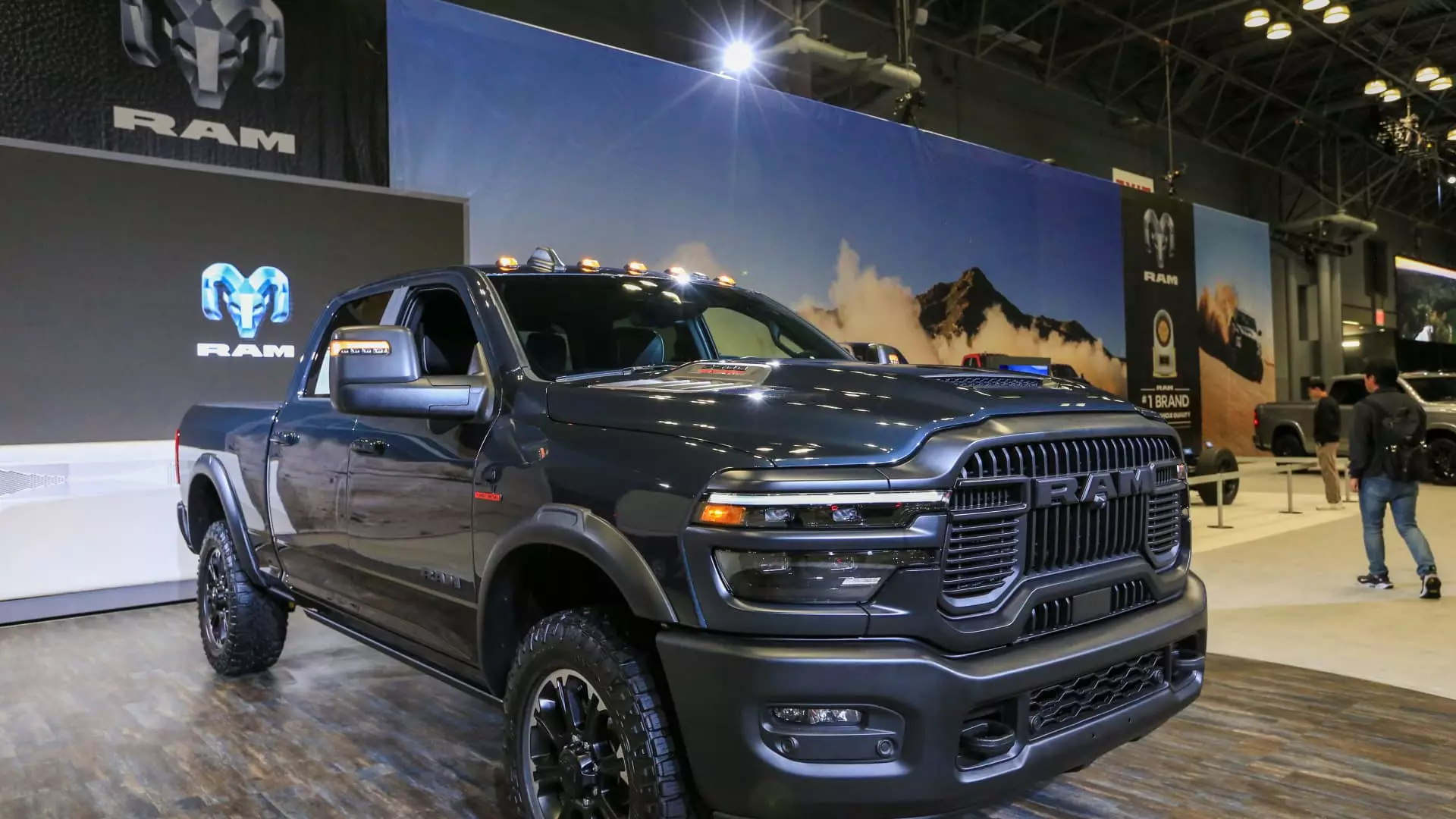In a daring move that challenges traditional automotive norms, Ram Trucks is set to launch a groundbreaking warranty that stretches to an impressive 10 years or 100,000 miles—whichever comes first. This substantial overhaul replaces the bland, standard warranty of five years or 60,000 miles that has become the industry norm. With rising consumer investment in vehicles, particularly pick-up trucks, this shift represents a potential paradigm shift in how brands interact with their customer base. For a sector notorious for its hesitancy in adapting to the changing economic landscape, Ram’s bold decision showcases a commitment to consumer trust and brand loyalty.
Understanding the Buyer’s Journey
The crux of Ram’s strategy is acutely understanding the current financing climate. As highlighted by Ram CEO Tim Kuniskis, a staggering 85% of truck buyers now opt for financing over seven years. This trend not only highlights the financial burden associated with purchasing trucks but also the psychological impact of investing large sums without adequate protection. Companies have historically offered warranties that do little to address the evolving lengths of vehicle financing. Kuniskis’s remarks underscore an uncomfortable truth: while consumers are pouring more money into these trucks, the warranties offered were embarrassingly outdated and inadequate.
This deep-seated contradiction underscores a significant disconnect between automotive companies and their customers. By extending warranty coverage to align more closely with the financial commitments of modern buyers, Ram is not simply making a business decision; it’s stepping up to fill a gaping void of consumer trust in the industry.
Risk vs. Reward: Calculated Risks in the Automotive Landscape
Though Ram’s announcement is a decisive leap towards consumer protection, it does not come without inherent risks. Offering a longer warranty could indeed lead to substantial costs, especially if widespread quality issues emerge in future vehicle models. Historically, manufacturers have shied away from such broad coverage, fearing liabilities that could sink profits. Yet, Kuniskis’s assertation that the perceived customer value of such a warranty overshadows the potential pitfalls is a refreshing reimagining of risk management in the auto industry.
Furthermore, competitors like Ford and General Motors continue to provide the same five-year or 60,000-mile warranties, leaving Ram with an opportunity to differentiate itself. While other industry players may fear the repercussions of increased warranty lengths, Ram’s confidence signifies a conducive shift in the market. The potential for increased consumer retention and attraction of new buyers becomes a compelling argument for the business-savvy decision makers at Stellantis.
The Competitive Edge—Rebuilding Brand Loyalty
As Ram seeks to reinvigorate itself following a staggering 38% sales decline since 2019, the decision to implement this extended warranty could mark a pivotal turning point. Kuniskis’s faith in this new strategy is a testament to the brand’s ambition to reclaim market relevance and restore the loyalty of previously disenchanted customers. The emphasis here is on brand rebuilding—an arduous endeavor in a competitive pickup truck market dominated by established players like Ford and GM, who have been reluctant to innovate beyond their own warranties.
This initiative may, however, come with caveats. While the warranty is initially applied to retail purchasers and individual customers, it excludes fleet purchases and certain commercial models. This decision could alienate specific segments of their market and curtail the potential for broader reach in a recovering economy. Balancing consumer needs with business strategy requires an astute understanding of market dynamics, especially when addressing the commercial sector whose needs differ significantly from individual consumers.
A Broader Impact on the Industry
If Ram’s new warranty garners consumer favor, it could catalyze a broader trend across the automotive landscape, compelling competitors to rethink their warranty structures. No longer can they operate in a cost-preventive bubble, ignoring the evolving needs of consumers investing in longer financing cycles. The potential for Ram to set new standards raises questions of accountability across the industry and may force brands to reconcile their value propositions with consumer expectations.
Ultimately, Ram’s approach to this burgeoning market challenge speaks of a pivotal rethinking within the automotive sector. Warranty programs are more than mere contractual obligations; they’re indicators of how seriously a brand values its customers’ investments. Now, Ram Trucks stands poised either to redefine its future or to languish within the confines of an outdated business model. The choice is theirs, and all eyes will eagerly watch how this risky endeavor unfolds, potentially reshaping an industry along the way.

